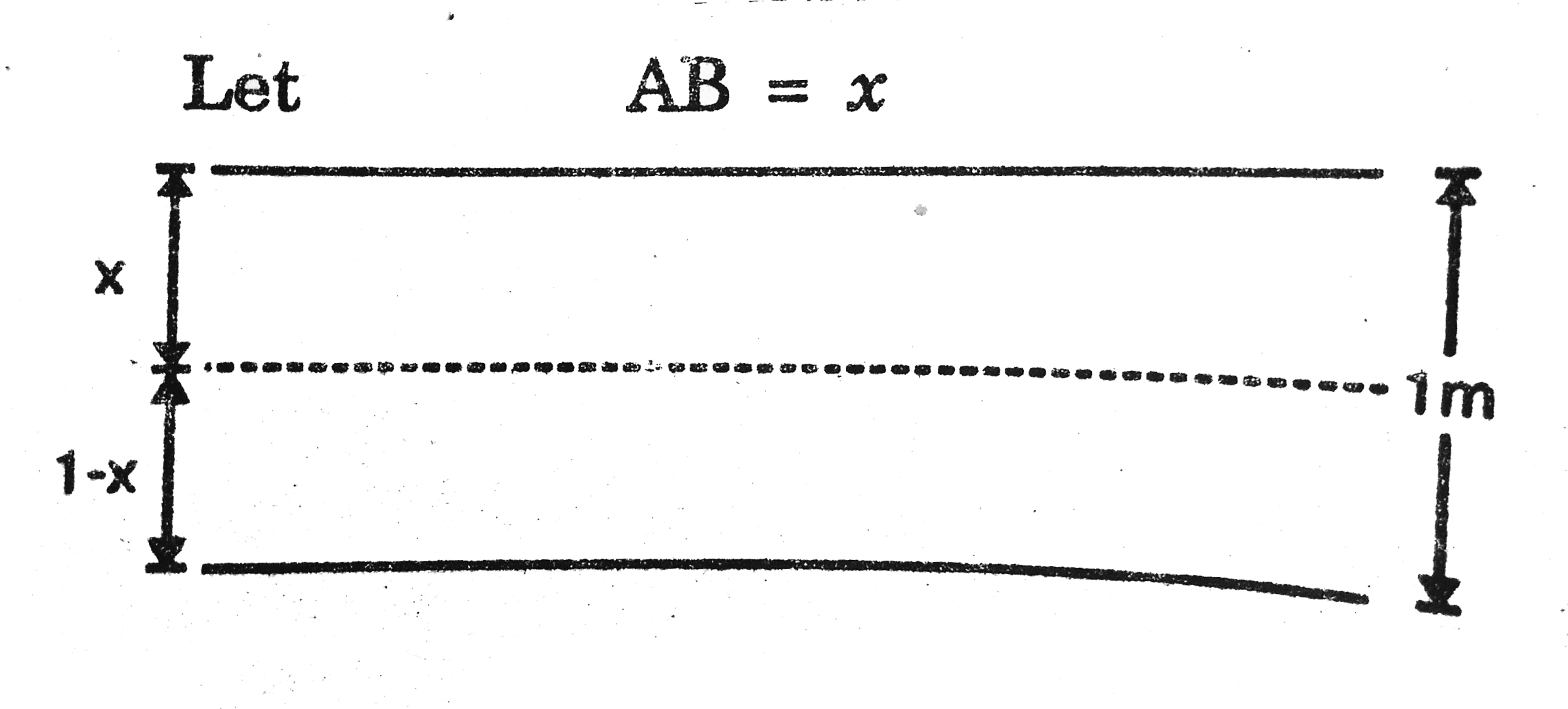Consider the situation of the previous problem. Assume that the temperature of the water at the botton of the lake remains contant at 4∘C as the ice forms on the surface (the heat required to maintain the temperature of the bottom layer may come from the bed of the lake). The depth of the lake is 1.0m.Showtˆthethick≠ssoftheiceformedaa∈sasteadystatemamiμmvalue.F∈dthisvalue.Thethermalconductivityofwater=0.50Wm ^(-1)^(∘)C−1 . Take other relevent data form the previous problelm.
The correct Answer is:C
Let B be the maximum level up to which ice is formed. Hence the heat conducted at that point form both the level is same.
i.e,Qicet=Qwatert
implies (K_(ice)xxAxx10)/x=(K_(water )xxAxx10)/(1-x)<br>⇒1.7×10x=5×10−1×41−x
implies(17)/x=(2)/(1-x)<br>implies 17-17x=2x<br>implies19x=17<br>implies x=(17)(19)=0.894m=89 cm.

Topper's Solved these Questions
- HEAT TRANSFERBOOK - HC VERMACHAPTER - HEAT TRANSFEREXERCISE - EXERCIESE
1 Videos
- HEAT TRANSFERBOOK - HC VERMACHAPTER - HEAT TRANSFEREXERCISE - Objective 2
6 Videos
- HEAT AND TEMPERATUREBOOK - HC VERMACHAPTER - HEAT AND TEMPERATUREEXERCISE - Exercise
4 Videos
- INTRODUCTION TO PHYSICSBOOK - HC VERMACHAPTER - INTRODUCTION TO PHYSICSEXERCISE - Exercises
19 Videos
Similar Questions
Knowledge Check
The temperature of water at the bottom of a lake whose upper surface has frozen to ice would be around
A−10∘CB0∘CC4∘CD−4∘CSurface water of a lake is about to freeze. What will be the temperature (in °C) of water at the bottom of the lake?
A0B−1C1D4The top of a lake is frozen as the atmospheric temperature is −10∘C. The temperature at the bottom of the lake is most likely to be,
A4∘CB0∘CC−4∘CD−10∘C
In winters ice forms on the surface of a lake. Due to abnormal expansion of water the temperature of the water at the bottom of the lake remains constant at 4∘C and we assume that the amount of heat required to maintain this temperamre of the bottom layer of water may come from the bed of the lake. If surrounding temperature is - 10∘C Prove that ice formed from the surface of the lake attains a maximum thickness. Find the maximum depth from surface upto which ice is formed if the depth of lake is I m. Given that thermal conductivity of ice is 0.5W/m∘C.
View SolutionSurface of the lake is at 2”∘C. The temperature of the bottom of the lake is
View SolutionThe temperature of water at the surface of a deep lake is 2C. The temperature expected at the botton is
View SolutionIf pressure at half the depth of a lake is equal to 2/3 pressure at the bottom of the lake then what is the depth of the lake ?
View SolutionTemperature of water at the surface of lake is −20∘C. Then temperature of water just below the lower surface of ice layer is
View Solution
